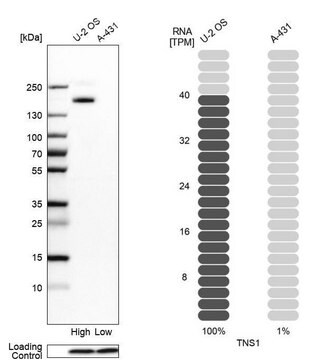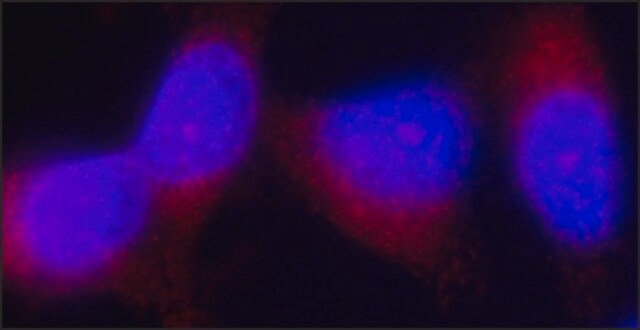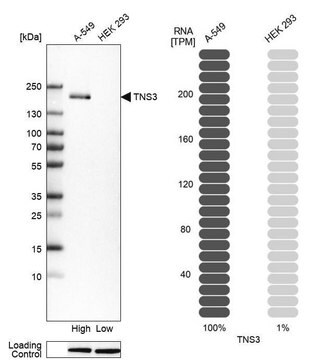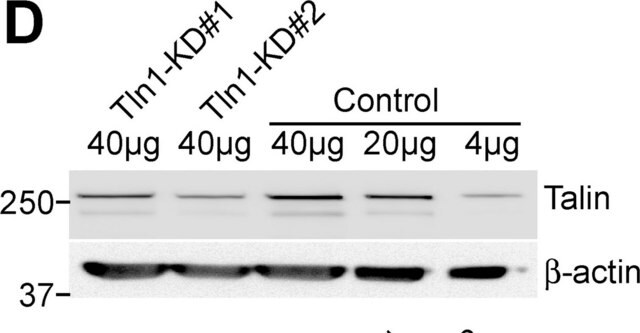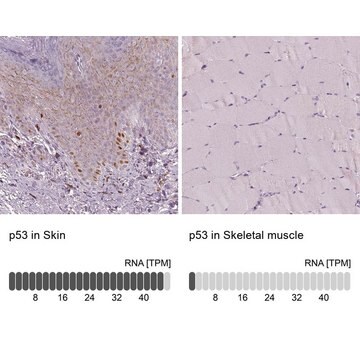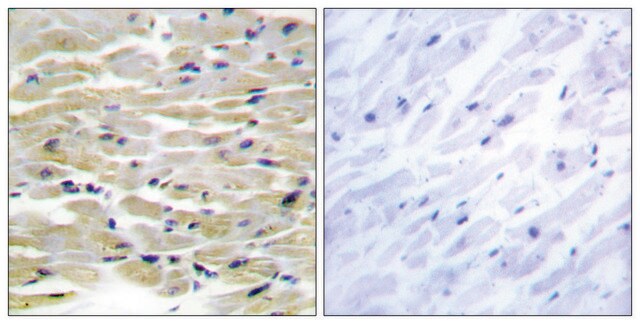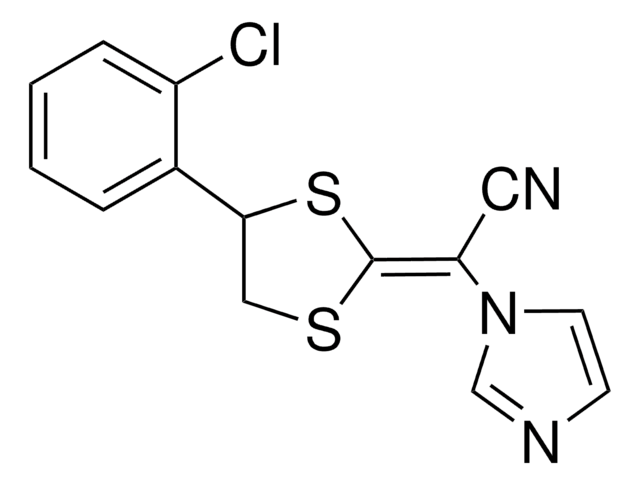ABT29
Anti-Tensin-3 Antibody
from rabbit, purified by affinity chromatography
Synonym(e):
Tensin-3, Tensin-like SH2 domain-containing protein 1, Tumor endothelial marker 6
About This Item
Empfohlene Produkte
Biologische Quelle
rabbit
Qualitätsniveau
Antikörperform
affinity isolated antibody
Antikörper-Produkttyp
primary antibodies
Klon
polyclonal
Aufgereinigt durch
affinity chromatography
Speziesreaktivität
human
Methode(n)
immunocytochemistry: suitable
western blot: suitable
NCBI-Hinterlegungsnummer
UniProt-Hinterlegungsnummer
Versandbedingung
wet ice
Posttranslationale Modifikation Target
unmodified
Angaben zum Gen
human ... TNS3(64759)
Allgemeine Beschreibung
Immunogen
Anwendung
Zellstruktur
ECM-Proteine
Cytoskelett
Qualität
Western Blot Analysis: 1 µg/mL of this antibody detected Tensin-3 in 10 µg of human kidney tissue lysate.
Zielbeschreibung
The calculated molecular weight is 155 kDa, however Tensin-3 has been shown as a ~180 kDa band in western blots (Cui, Y., et al. (2004). Molecular Cancer Research. 2:225–232).
An uncharacterized band appears at ~22 kDa in some lysates.
Physikalische Form
Lagerung und Haltbarkeit
Hinweis zur Analyse
Human kidney tissue lysate
Sonstige Hinweise
Haftungsausschluss
Sie haben nicht das passende Produkt gefunden?
Probieren Sie unser Produkt-Auswahlhilfe. aus.
Lagerklassenschlüssel
12 - Non Combustible Liquids
WGK
WGK 1
Flammpunkt (°F)
Not applicable
Flammpunkt (°C)
Not applicable
Analysenzertifikate (COA)
Suchen Sie nach Analysenzertifikate (COA), indem Sie die Lot-/Chargennummer des Produkts eingeben. Lot- und Chargennummern sind auf dem Produktetikett hinter den Wörtern ‘Lot’ oder ‘Batch’ (Lot oder Charge) zu finden.
Besitzen Sie dieses Produkt bereits?
In der Dokumentenbibliothek finden Sie die Dokumentation zu den Produkten, die Sie kürzlich erworben haben.
Unser Team von Wissenschaftlern verfügt über Erfahrung in allen Forschungsbereichen einschließlich Life Science, Materialwissenschaften, chemischer Synthese, Chromatographie, Analytik und vielen mehr..
Setzen Sie sich mit dem technischen Dienst in Verbindung.
